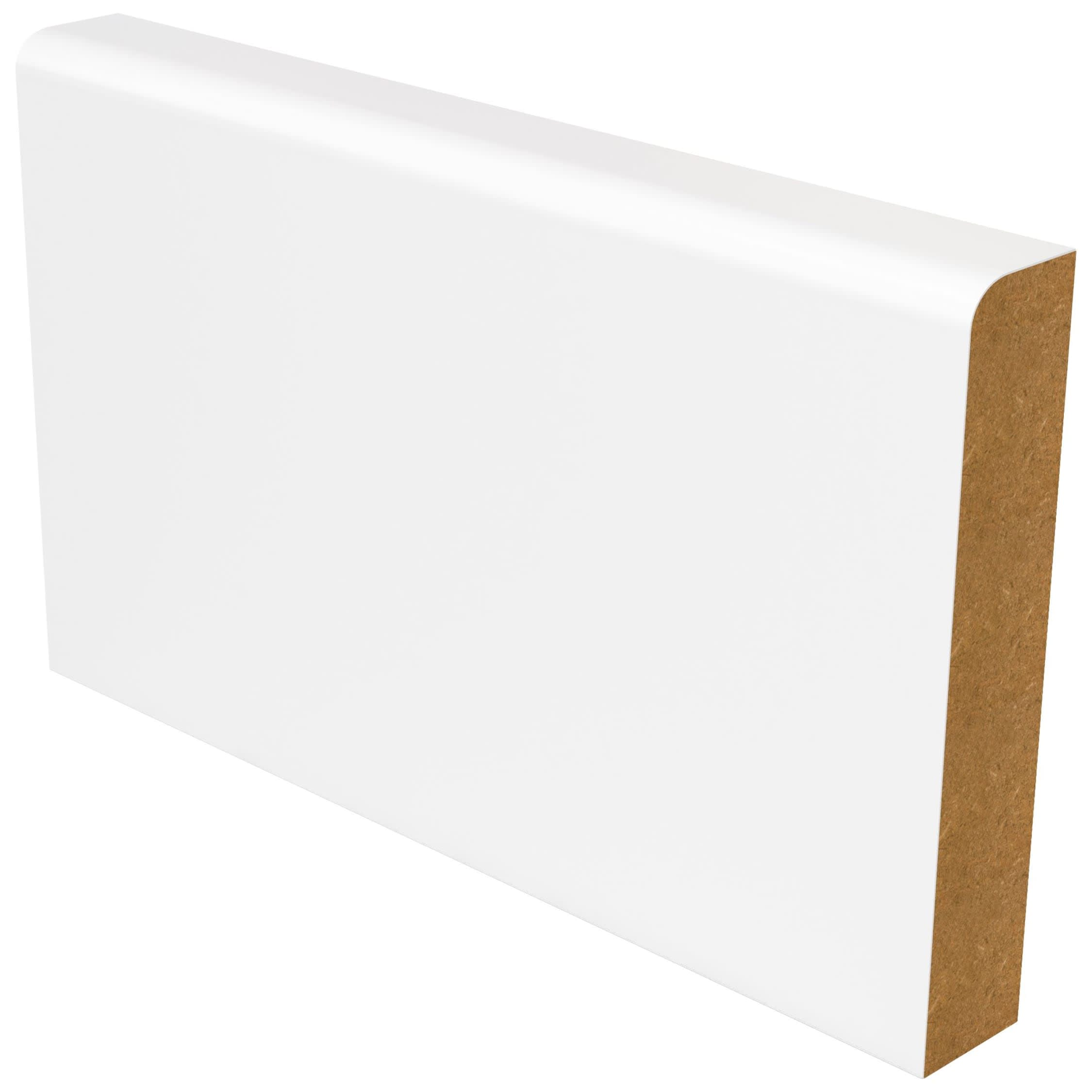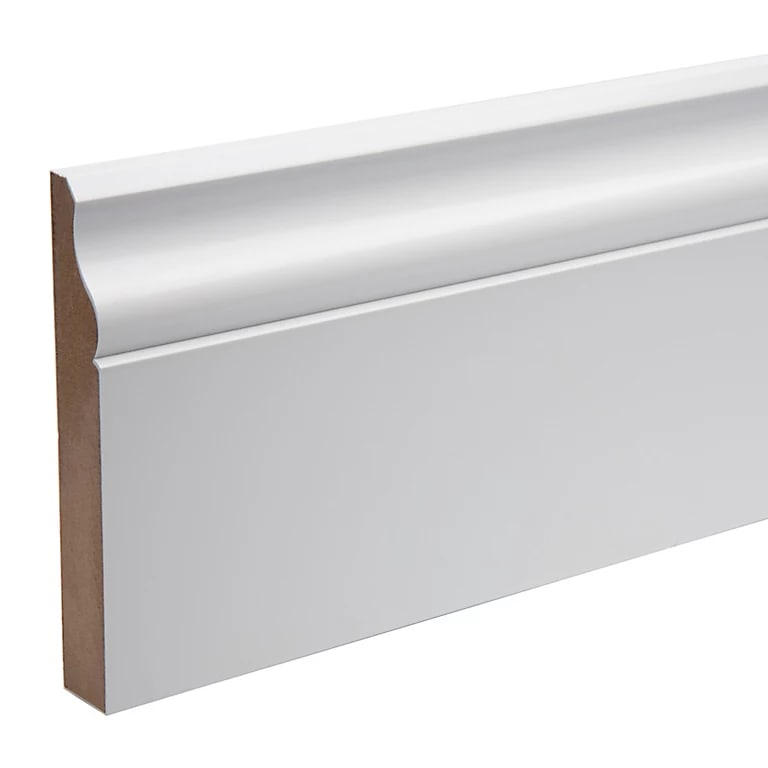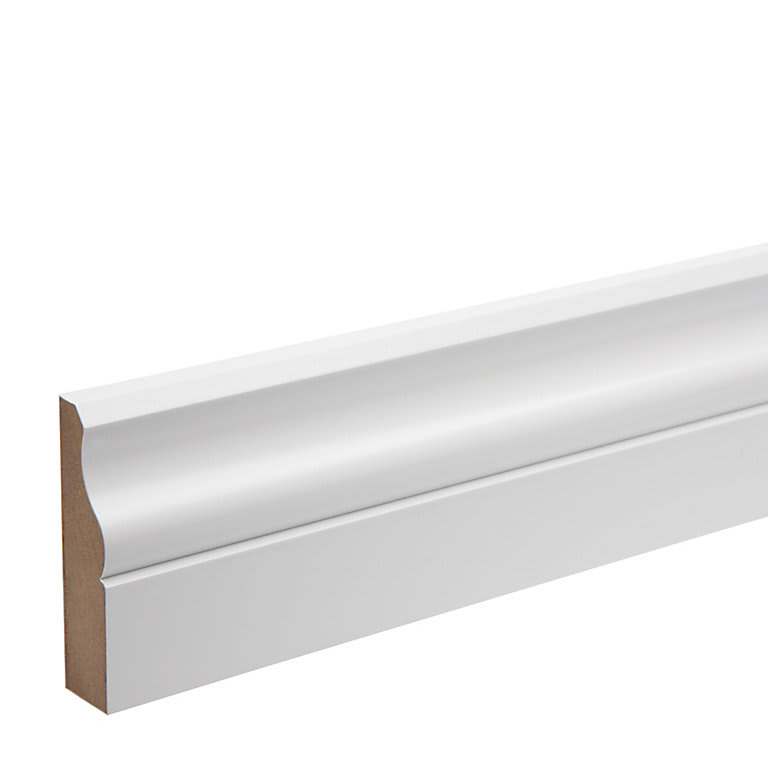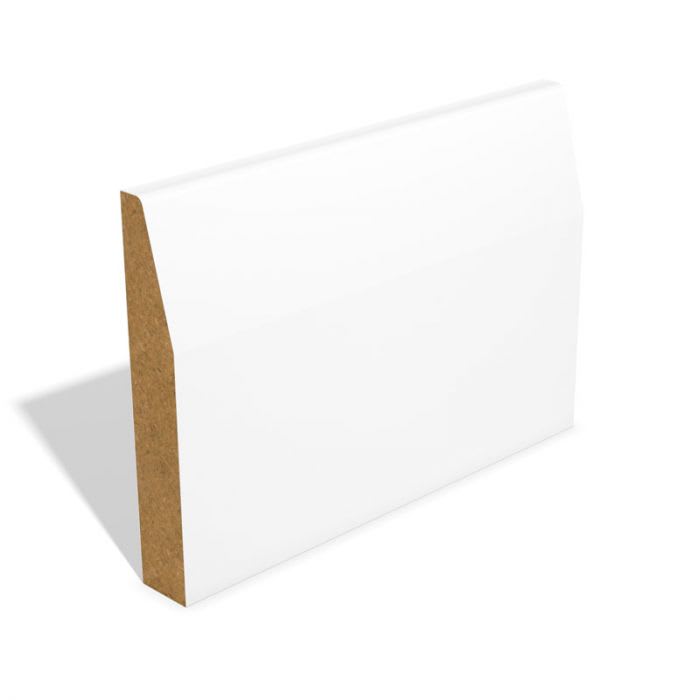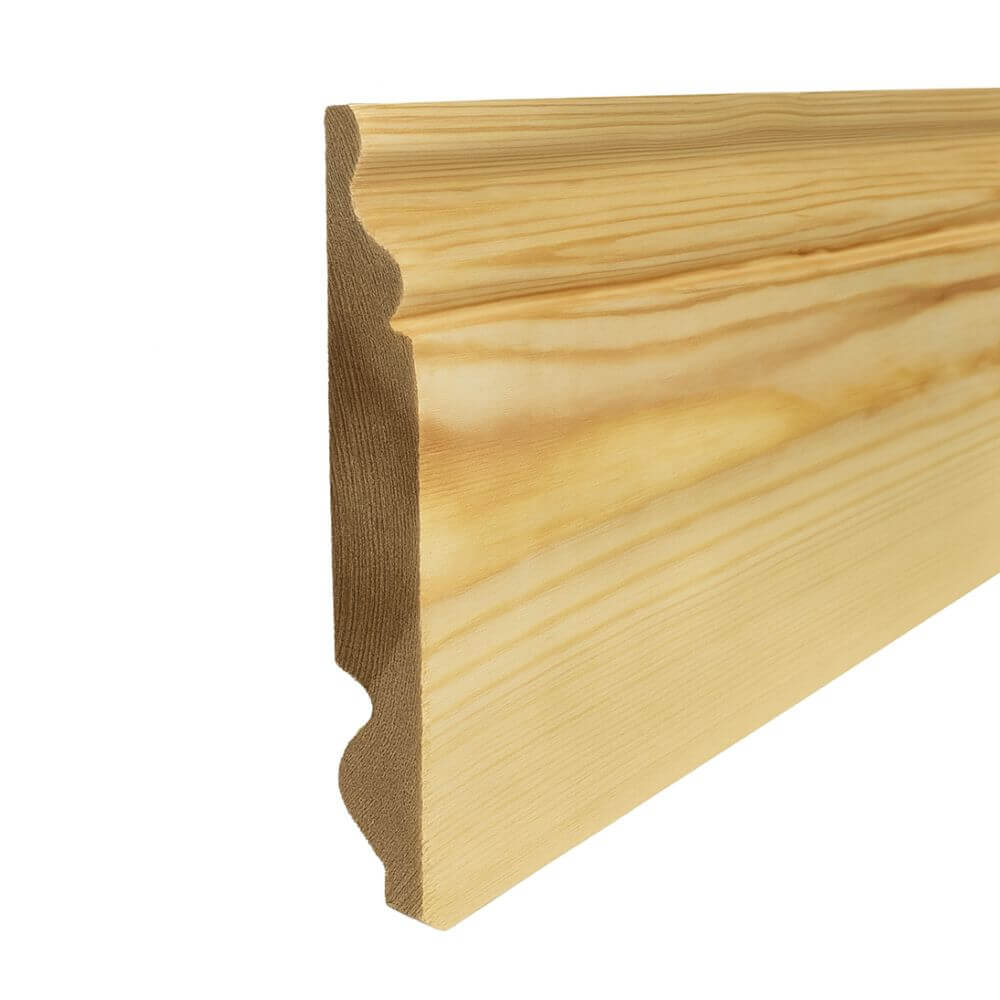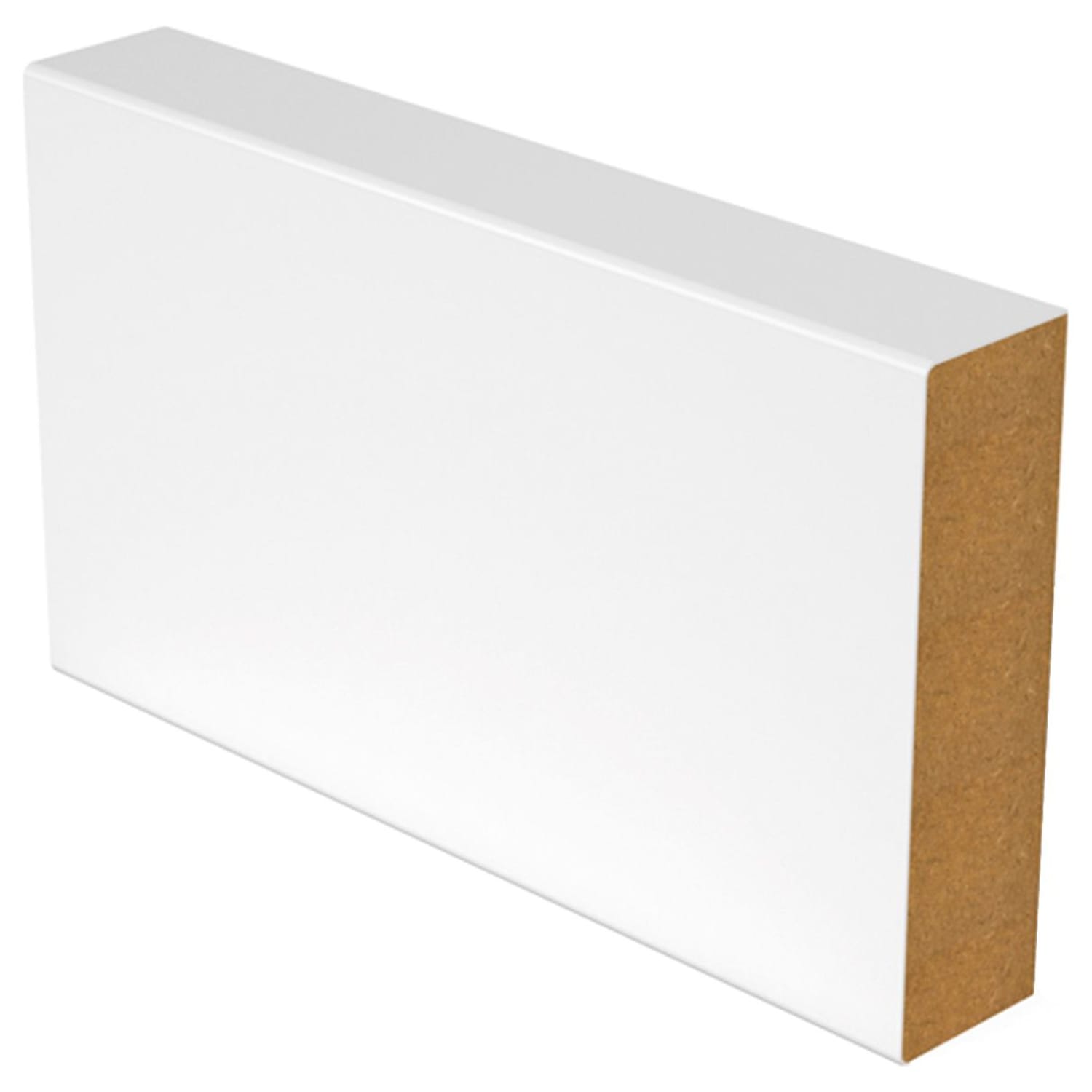Skirting and Architrave
(32 Products)Skirting and architrave bring cohesion, protection, and personality to interior spaces. They conceal joins, soften transitions, and tie together the overall look of a room. With profiles ranging from ornate to minimalist, they adapt seamlessly to both heritage styles and modern interiors.
What Are Skirting Boards & Architrave?
Skirting and architrave are both forms of decorative trim that serve to bridge and protect transitional points within a room.
- Skirting (Baseboard): This moulding covers the crucial joint where the wall meets the floor, running continuously around the room's perimeter. It establishes the base line for the entire space.
- Architrave: This moulding frames the structural openings of a room - doorways and windows - seamlessly joining the wall surface with the door or window frame.
Together, they perform a critical dual role: concealing imperfections and providing protection. Walls and floors, or walls and door/window frames, are rarely perfectly flush. Skirting expertly hides the unsightly expansion gaps at floor level, while architrave masks the rough construction joints around openings.
This unified system acts as a durable barrier, shielding vulnerable plasterwork and paint from the inevitable scuffs, knocks, and daily wear inflicted by furniture, foot traffic, and cleaning activities.
Without this protective pair, a room's lower walls and openings would quickly show signs of damage, undermining the longevity and appearance of the interior finishes.
Purpose and Function - Skirting
- Concealment of Gaps: Walls and floors are rarely perfectly straight or meet precisely. Skirting effectively hides the often uneven, unsightly gap that naturally occurs at this junction, providing a clean, tidy finish.
- Protection Against Damage: One of its primary practical roles is to protect the lower part of walls from daily wear and tear. This includes scuffs from vacuum cleaners, knocks from furniture, splashes during cleaning, and general foot traffic. Without skirting, walls would quickly show signs of damage, requiring more frequent repairs and repainting.
- Aesthetics: Skirting frames a room, providing a visual boundary that grounds the space. It can add architectural detail, create a sense of scale, and significantly contribute to the overall style, whether it's a grand Victorian aesthetic or a minimalist modern look.
- Concealment of Wires: In many modern installations, skirting can be designed with rebates or channels to discreetly conceal electrical wires, network cables, or speaker wires, maintaining a tidy appearance.
Types and Styles
- Traditional & Period Styles:
- Victorian Skirting: Characterised by deep, elaborate, and often multi-layered profiles, reflecting the era's opulence and grandeur. Common profiles include "Ogee," "ogee and scotia," and highly detailed "lambs tongue" designs. These are typically tall to match the high ceilings of Victorian homes.
- Edwardian Skirting: While still ornate, Edwardian skirting often features slightly simpler, more classical profiles than Victorian, with a move towards wider, less intricate designs.
- Georgian Skirting: Known for its clean lines, bold proportions, and often simpler, robust profiles like "Chamfered" or plain "Bullnose," reflecting the classical influences of the period.
- Modern & Contemporary Styles:
- Pencil Round/Bullnose: Simple, rounded top edge. Extremely popular for its clean, understated look, making it versatile for almost any contemporary interior.
- Chamfered: A simple, angled top edge, offering a subtle, clean line suitable for modern and minimalist designs.
- Square Edge: The most minimalist option, with a sharp, crisp 90-degree angle at the top. Ideal for ultra-modern or industrial aesthetics.
- Grooved/Beaded: Contemporary designs may incorporate subtle vertical or horizontal grooves, or small decorative beads, adding understated detail without overt ornamentation.
- Height Considerations: Skirting height significantly impacts a room's perceived scale. Taller skirting (150mm - 250mm+) often suits rooms with high ceilings, adding a sense of grandeur, while shorter skirting (70mm - 120mm) is typically used in rooms with lower ceilings or where a more subtle finish is desired.
Purpose and Function - Architrave
Architrave’s role parallels that of skirting in many ways:
- Concealment of Gaps: It effectively hides the often uneven and unsightly construction gap where a door frame or window frame meets the plasterwork or drywall.
- Protection of Edges: It protects the delicate edges of plasterwork around openings from chips, knocks, and general wear as people pass through doorways or interact with windows.
- Aesthetic Continuity and Framing: Architrave provides a visual frame for doors and windows, defining these openings as architectural features. It helps to tie together the design elements of a room, providing visual continuity with the skirting and other mouldings.
- Visual Balance: Properly proportioned architrave contributes to the overall visual balance of a room, ensuring openings don't appear unfinished or stark.
Types and Styles
Architrave profiles largely mirror those of skirting, as they are typically chosen to complement each other.
- Matching Profiles: The most common approach is to select an architrave profile that directly matches or closely relates to the chosen skirting board profile (e.g., "Bullnose" skirting with "Bullnose" architrave, or a classic "Ogee" pairing). This creates a harmonious and consistent aesthetic throughout the interior.
- Proportion and Scale: Like skirting, the width and thickness of architrave should be chosen to suit the scale of the room and the openings. Wider, bolder architraves suit larger rooms and grander doorways, while narrower, more subtle profiles are better for smaller spaces.
- Variations: While most architrave is a simple vertical and horizontal frame, some period styles might incorporate decorative blocks at the corners (known as plinth blocks at the base and corner blocks/rosettes at the top) to add further ornamentation and detail.
Benefits
- Unified Aesthetic: By selecting matching or complementary profiles and materials, skirting and architrave create a cohesive visual language throughout a property. This attention to detail signals quality and thoughtful design.
- Flow and Cohesion: They guide the eye around the room, creating a sense of flow from floor to wall to door frame, rather than abrupt, unfinished transitions. This visual continuity makes a space feel more complete and intentionally designed.
- Architectural Framing: Together, they act as the "frame" for the entire room, defining its boundaries and accentuating its openings. This framing effect is crucial for establishing the desired architectural style, whether it's classic elegance, minimalist simplicity, or rustic charm.
- Proportion and Scale: Expert designers pay close attention to the proportion of skirting and architrave relative to the room's ceiling height, door dimensions, and overall scale. A robust skirting paired with a delicate architrave can create an imbalance, whereas well-matched proportions enhance the room's visual harmony.
Installation and Finishing Considerations
- Preparation: Walls and floors must be clean, dry, and reasonably level. Accurate measurements are critical.
- Cutting Angles: Achieving seamless joins requires precise mitre cuts, particularly at internal and external corners for skirting, and at the top corners of architrave.
- Fixing Methods: Mouldings are typically fixed using a combination of adhesive (e.g., grab adhesive) and mechanical fixings (nails, screws, or pin nails). The chosen method depends on the material, wall type, and desired strength.
- Finishing:
- Priming: MDF and softwood must be primed before painting to ensure paint adhesion and prevent knots from bleeding.
- Filling: Nail holes, small gaps, and imperfections are filled with wood filler or decorators' caulk for a smooth finish.
- Sanding: Light sanding between coats ensures a professional, smooth surface.
- Painting/Staining: Applying multiple thin coats of paint provides the best finish. For hardwood, oiling, lacquering, or staining protects the wood while highlighting its natural beauty.
Maintenance and Longevity
The longevity of skirting and architrave largely depends on the material and level of care.
- Cleaning: Regular dusting and wiping with a damp cloth are usually sufficient. For painted surfaces, a mild soap solution can tackle grime.
- Repairing Damage: Chips, dents, and cracks can often be repaired with wood filler, sanded smooth, and repainted.
- Repainting/Restaining: Periodically repainting painted mouldings (every 5-10 years, depending on wear) or re-oiling/restaining natural wood ensures their continued protection and aesthetic appeal.
- Moisture Management: Promptly address any water leaks or excessive humidity, as moisture is the primary enemy of most timber and MDF mouldings, leading to swelling, warping, and mould.
Frequently Asked Skirting & Architrave Questions
What's the Difference Between Architrave and a Door Frame?
A door frame is the structural element that forms the opening for the door, holding the door itself and the hinges. Architrave is the decorative moulding that sits around the door frame, covering the joint between the frame and the wall.
Can Skirting & Architrave Be Painted/Stained to Match A Colour Scheme?
Yes, both can be painted or stained to match your room's colour scheme. Many come pre-primed and can be easily painted or stained to achieve the desired finish.
However, it's important to properly prepare the surface and use suitable paint or stain for the material to ensure a long-lasting and professional result.
Can Skirting & Architrave Be Installed as a DIY Project, or Do I Need To Hire a Professional?
Skirting and architrave installation can be a DIY project for those with experience in carpentry and DIY skills.
However, it's crucial to ensure proper measurements, cuts, and installation techniques to achieve a seamless and professional result.
If you're not confident in your skills, it's recommended to hire a professional carpenter or installer to ensure the best outcome. Architrave specialists and carpenters have the expertise and experience to ensure a proper fit which ultimately helps you achieve a consistent look throughout a room.
Should You Match Skirting & Architrave?
Traditionally speaking, skirting and architrave are matched in terms of style and colour. This isn't to say, however, that you cannot mix and match.
Both skirting and architrave are aspects of interior design which, of course, all come down to personal preference and style.





